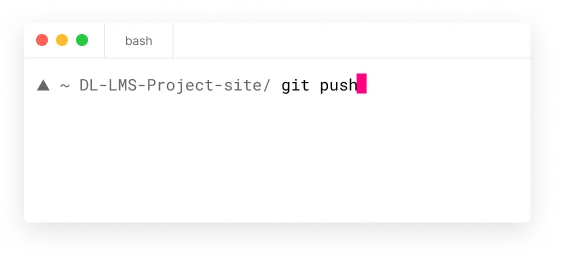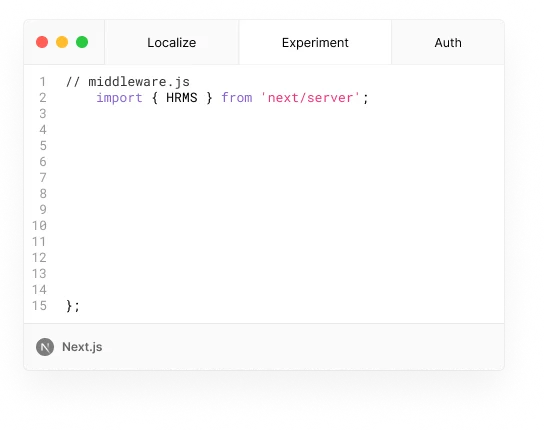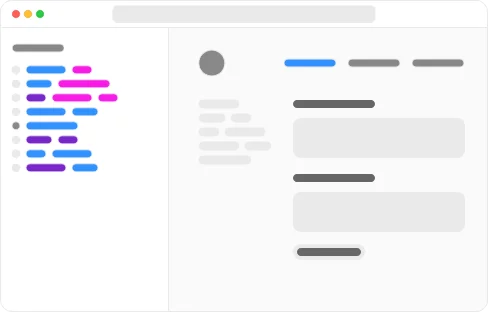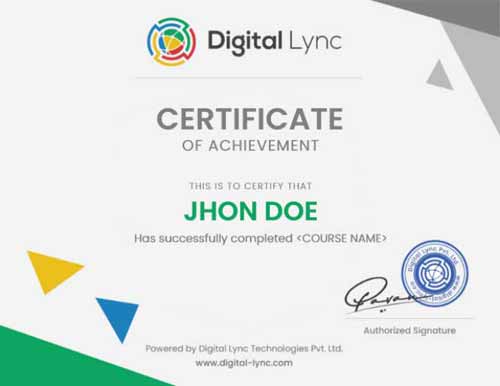
Managers said
hiring Fullstack engineers
was top priority

Managers said
hiring Fullstack engineers
was top priority

Managers said
hiring Fullstack engineers
was top priority

Managers said
hiring Fullstack engineers
was top priority

Managers said
hiring Fullstack engineers
was top priority

Managers said
hiring Fullstack engineers
was top priority
Learn from Curated Curriculums developed by Industry Experts
Topics :
What is an Application?
Overview of applications and their significance.
Types of Applications
Classification and examples of various application types.
Fundamentals of Web Applications
Basic concepts and components of web applications.
Web Application Architecture
Structure and design patterns in web application architecture.
Web Technologies used in Projects
Key technologies and frameworks used in web application development.
Topics :
Introduction to Software Development Life Cycle
The phases, importance, and overview of SDLC.
Application Lifecycle Management - ALM
Tools, processes, and overview of ALM.
SDLC Methodologies
Examination of different methodologies used in software development.
DevOps Process
Understanding the principles, practices, and benefits of DevOps.
Topics
1. Introduction To Agile & Scrum
Fundamental overview of Agile methodologies and the Scrum framework.
2. The Principles of Agile Methodology
Core principles of Agile focusing on iterative development and customer collaboration.
3. Scrum Framework: Roles, Artifacts, and Events
Key components of Scrum, including its roles, artifacts, and structured events.
4. Implementing Agile with Scrum
Strategies for applying Agile and Scrum practices in software development projects.
5. Agile Project Management Best Practices
Essential practices for leading Agile projects, emphasizing communication and continuous improvement.
Topics :
Introduction to Linux OS
Exploring the fundamentals of the Linux operating system.
Linux Distributions and Architecture
Understanding different distributions and the architecture of Linux.
Command Line Interface (CLI) & Filesystem
Mastering the CLI and navigating the Linux filesystem.
File Management and vi Editor
Managing files and editing them using the vi editor.
Archives and Package Management
Utilizing tar, zip utilities, and managing packages in Linux.
System Installation and Package Managers
Installing software on Ubuntu, using .deb files, and the APT package manager.
Users, Groups, and Permissions
Managing users and groups, and configuring permissions.
Networking Basics: IP Address, Protocols, & Ports
Introduction to networking in Linux: IP addresses, protocols, and ports.
Firewalls and Security Measures
Configuring firewalls and understanding basic security measures.
Load Balancers
Basics of load balancing in a Linux environment for optimizing performance and reliability
Topics Covered:
Data and Databases Basics
Introduction to RDBMS
Understanding OLTP, DWH, and OLAP
Microsoft SQL Server Overview
SQL and T-SQL Overview
Key Roles of SQL DBA
Routine, Emergency, and Maintenance DBA Activities
Introduction to SQL Server Components
Topics Covered:
System Requirements and Prerequisites for Installation
SQL Server Installation Process Overview
Understanding SQL Server Instances
Configuring Authentication Modes
Post-Installation Steps
Topics
SSMS Overview and Interface
Connecting to Database Instances
Exploring System Databases
Basic Database Operations in SSMS
Data Insertion and Basic Retrieval Techniques in SSMS
Topics:
DDL, DML, DCL, and TCL Commands Overview
Advanced Data Insertion Techniques
SELECT Statement Enhancements
Data Selection with WHERE Clause
Batch Operations and Transactions Basics
Topics:
Understanding Schemas and Their Importance
Temporary Tables and Their Use Cases
Implementing Data Integrity with Constraints
Basics of Indexing for Performance
Topics:
Deep Dive into JOIN Types
Practical Scenarios for Using JOINS
Optimization Techniques for JOINS
Using Advanced SQL Queries for Data Analysis
Topics:
Introduction to Triggers and Their Use Cases
Managing Database Transactions
Utilizing GROUP BY for Advanced Data Aggregation
Configuring Linked Servers for Remote Data Access
Topics:
Deep Dive into SQL Server Architecture
Data and Log File Management
SQL Server Memory Management Internals
Utilizing Filegroups for Optimized Data Storage
Topics Covered:
Planning and Executing Database Backups
Backup Types and Their Appropriate Use Cases
Database Restoration Practices
Disaster Recovery Strategies
Topics:
Setting Up SQL Server Agent for Job Management
Creating and Managing Maintenance Plans
SQL Server Security Best Practices
Implementing Encryption and Auditing
Topics:
Introduction to Databases and SQL: Understanding relational databases and the role of SQL.
SQL Syntax Overview: Keywords, statements, and clauses.
Basic SQL Commands: SELECT, FROM, WHERE, and ORDER BY.
Filtering Data: Using conditions to retrieve specific data (AND, OR, NOT).
Topics:
Understanding Table Relationships: Primary keys, foreign keys, and the importance of relationships in databases.
Join Operations: INNER JOIN, LEFT JOIN, RIGHT JOIN, and FULL JOIN.
Subqueries and Nested Queries: Using subqueries in the SELECT, FROM, and WHERE clauses.
Aggregating Data: Using GROUP BY and aggregate functions (COUNT, SUM, AVG, MIN, MAX).
Topics:
Data Manipulation Commands: INSERT, UPDATE, DELETE.
Managing Tables: Creating and altering tables (CREATE TABLE, ALTER TABLE, DROP TABLE).
Advanced Filtering Techniques: Using LIKE, IN, BETWEEN, and wildcard characters.
Working with Dates and Times: Understanding and manipulating date and time data.
Topics:
Advanced SQL Functions: String functions, mathematical functions, and date functions.
Window Functions: Overviews of ROW_NUMBER, RANK, DENSE_RANK, LEAD, LAG, and their applications.
Query Performance Optimization: Indexes, query planning, and execution paths.
Common Table Expressions (CTEs): Writing cleaner and more readable queries with WITH clause.
Topics:
Analytical SQL for Reporting: Building complex queries to answer analytical questions.
Pivoting Data: Transforming rows to columns (PIVOT) and columns to rows (UNPIVOT).
Data Warehousing Concepts: Introduction to data warehousing practices and how they apply to SQL querying.
Integrating SQL with Data Analysis Tools: Connecting SQL databases with tools like Excel, Power BI, and Python for deeper data analysis.
Topics :
Introduction to Azure SQL - Logical Servers and Managed Instances
Setting up SSMS and Azure Data Studio for Azure SQL
Topics :
Azure SQL Server (Logical Server) Setup
Configuring Azure SQL Server Firewall for Security
Azure SQL Database Pricing Tiers and Scalability
Accessing Azure SQL Databases from SSMS
Dynamic Scalability with Elastic Pools and DTU
Implementing General Purpose and Business Critical Plans
Topics :
Strategies for Data Migration to Azure SQL
Using Azure Storage for Database Migration
Understanding the Data Transaction Unit (DTU) and vCore Models
Implementing Schema Generation and Compatibility Checks
Utilizing Elastic Queries for Cross-Database Operations
Topics :
Azure SQL Database Level Tuning and Automated Tuning Options
Monitoring and Optimizing Query Performance
Index Management and Performance Insights in Azure SQL
Implementing Azure Search for Enhanced Data Retrieval
Topics :
Configuring Geo-Replication and Failover Groups for HA/DR
Azure SQL Backup Options and Long-Term Retention Policies
Database Recovery and Geo-Redundant Backups
Security Management in Azure SQL - Firewalls, RLS, and Permissions
Understanding and Implementing Row-Level Security (RLS)
Basics of Transparent Data Encryption and Dynamic Data Masking
Additional Considerations:
PowerShell and Azure CLI for Database Administration
Setting up Windows Clusters and Always On Availability Groups with Azure VMs
DP-300 Certification Guidance, including study materials and sample questions
This course structure is tailored to provide a comprehensive learning path from cloud computing basics, specifically focused on Azure, to advanced topics in Azure SQL Database administration, including migrations, scaling, performance tuning, high availability (HA), disaster recovery (DR), and security management.
Topics Covered:
1. Cloud Concepts
Understanding the benefits and considerations of using cloud services.
Exploring Infrastructure-as-a-Service (IaaS), Platform-as-a-Service (PaaS), Software-as-a-Service (SaaS).
Differentiating between Public Cloud, Private Cloud, and Hybrid Cloud models.
Topics Covered:
1. Azure Compute
Introduction to the types of compute services offered by Azure and their use cases.
2. Azure Storage
Overview of Azure's storage options and recommendations for different data types and usage scenarios.
3. Azure Networking
Basic concepts of Azure networking solutions including virtual networks, subnets, and connectivity options.
4. Azure Database Services
Introduction to Azure's database services for relational and non-relational data.
Topics Covered:
1. Azure Pricing and Support
Understanding Azure pricing, cost management tools, and Azure support plans and services.
2. Azure Governance
Azure governance methodologies, including Role-Based Access Control (RBAC), resource locks, and Azure Policy.
Topics
Topics Covered:
1. Azure Portal and Azure CLI
Utilising the Azure Portal and Azure Command-Line Interface (CLI) for managing Azure services.
2. Azure Management Tools
Introduction to Azure management tools like Azure Monitor, Azure Resource Manager, and Azure Policy for efficient resource management.
Topics:
App Services
Overview of Azure App Service plans, networking for an App Service, and container images.
Understanding how to deploy and manage web apps and APIs using Azure App Services.
Topics:
Overview of Azure Databases for PostgreSQL
Relational Database as a Service (DBaaS) Explained
Advantages and Implementation Options of PostgreSQL in Azure
Understanding Deployment Models: Single Server, Flexible Server, HyperScale (Citus)
Topics:
Key Azure Resources and Services for Database Management
Managing Storage in Azure: Blob Storage, File Shares, and Storage Tiers
Azure Active Directory (AAD): Creating Users and Managing Permissions
Service Principals and Identity Access Management (IAM)
Topics:
Steps to Create and Configure PostgreSQL Server Instances on Azure
Flexible Server Deployment Options and Their Benefits
Security Configurations: Firewall Settings and Connection Security
Database Creation, Data Insertion, and Query Performance in Azure
Topics:
Strategies for Migrating Databases from On-Premise to Azure
Using Azure Data Movement Service (DMS) for Efficient Migrations
Handling Schema Migrations and Network Configurations
Best Practices for Using Virtual Networks and Security Groups during Migration
Topics:
Monitoring Tools and Techniques in Azure for PostgreSQL
Implementing Robust Security Measures: TDE, SSL, VA
High Availability (HA) and Disaster Recovery (DR) Strategies
Planned Maintenance, Patching, and Real-Time Operational Adjustments
Each module is designed to provide not only theoretical knowledge but also practical insights and steps for effective management of PostgreSQL databases on Azure, making it ideal for database administrators looking to leverage Azure's cloud capabilities.
Topics:
Cloud Computing Fundamentals: Overview of cloud service models (IaaS, PaaS, SaaS) and deployment models (public, private, hybrid).
Basics of DevOps: Understanding the DevOps culture, practices, and its significance in cloud environments.
Data on the Cloud: Exploring cloud storage solutions, databases, and big data services provided by major cloud providers (AWS, Azure, Google Cloud).
Introduction to Infrastructure as Code (IaC): Concepts and tools for managing infrastructure through code.
Topics:
Cloud Computing Fundamentals: Overview of cloud service models (IaaS, PaaS, SaaS) and deployment models (public, private, hybrid).
Basics of DevOps: Understanding the DevOps culture, practices, and its significance in cloud environments.
Data on the Cloud: Exploring cloud storage solutions, databases, and big data services provided by major cloud providers (AWS, Azure, Google Cloud).
Introduction to Infrastructure as Code (IaC): Concepts and tools for managing infrastructure through code.
Topics:
Cloud Storage Solutions: Differences between object storage, file storage, and block storage. Use cases for each.
Cloud Databases: Overview of relational and NoSQL database services in the cloud (e.g., AWS RDS, Azure SQL Database, Google Cloud Firestore).
Data Warehousing and Big Data Solutions: Introduction to cloud-based data warehousing services (e.g., Amazon Redshift, Google BigQuery, Azure Synapse Analytics).
Data Migration to Cloud: Strategies and tools for migrating data to cloud environments.
Topics:
Automated Data Pipelines: Designing and implementing automated data pipelines using cloud services.
Continuous Integration and Continuous Delivery (CI/CD) for Data: Applying CI/CD practices to data pipeline development, including version control, testing, and deployment strategies.
Monitoring and Logging: Tools and practices for monitoring cloud resources and data pipelines, understanding logs and metrics for troubleshooting.
Infrastructure as Code (IaC) for Data Systems: Using IaC tools (e.g., Terraform, CloudFormation) to provision and manage cloud data infrastructure.
Topics:
Serverless Data Processing: Leveraging serverless architectures for data processing tasks (e.g., AWS Lambda, Azure Functions).
Containerization and Data Services: Using containers (e.g., Docker, Kubernetes) for deploying and scaling data applications and services in the cloud.
Machine Learning and AI in the Cloud: Introduction to cloud-based machine learning services and integrating AI capabilities into data pipelines.
Data Analytics and Visualization: Tools and services for analyzing and visualizing data directly in the cloud (e.g., Amazon QuickSight, Google Data Studio, Power BI on Azure).
Work on our Real-time Projects , Task Based

An LMS project develops a digital platform for online learning, featuring course creation, content management, user tracking, assessments, and reporting, aimed at enhancing educational interaction.

The HRMS project develops a digital system for managing HR functions like employee data, payroll, recruitment, and performance, aiming to streamline processes and enhance organizational efficiency.

A CRM project develops a system to manage company interactions with customers, incorporating tools for contact, sales, productivity, and support to enhance service, drive sales, and boost retention.
Internships and Course certifications for Enhanced Skill Validation.


Our focus on job-readiness Github Profile, Linkedin Profile, Resume Prep and Help Apply
Guidance on creating and maintaining a professional GitHub profile to showcase technical projects and coding prowess.
Assistance in crafting a compelling LinkedIn profile for networking and visibility among recruiters.
Expert advice on resume writing to effectively highlight skills, experience, and achievements.
Support in identifying suitable job opportunities and navigating the application process.

25th Sept 2023
Monday
8 AM (IST)
1hr-1:30hr / Per Session
27th Sept 2023
Wednesday
10 AM (IST)
1hr-1:30hr / Per Session
29th Sept 2023
Friday
12 PM (IST)
1hr-1:30hr / Per Session
50,000+ uplifted through our hybrid classroom & online training,
enriched by real-time projects and job support.
Come and chat with us about your goals over a cup of coffee

2nd Floor, Hitech City Rd, Above Domino's, opp. Cyber Towers, Jai hind Enclave, Hyderabad, Telangana,

3rd Floor, Site No 1&2 Saroj Square, Whitefield Main Road, Munnekollal Villag Post, Marathahalli, Bengaluru, Karnataka

Madhav Nager Main Road, Opp SBI Bank, Opp SP Office, Kakinada,
Andhra Pradesh